A Conversation with Artist, Samantha Fields
We chat with multimedia artist Samantha Fields about her project Desires Not Even Our Own, which comments on the un-sustainability of the fashion industry as well as marketing and the psyche.
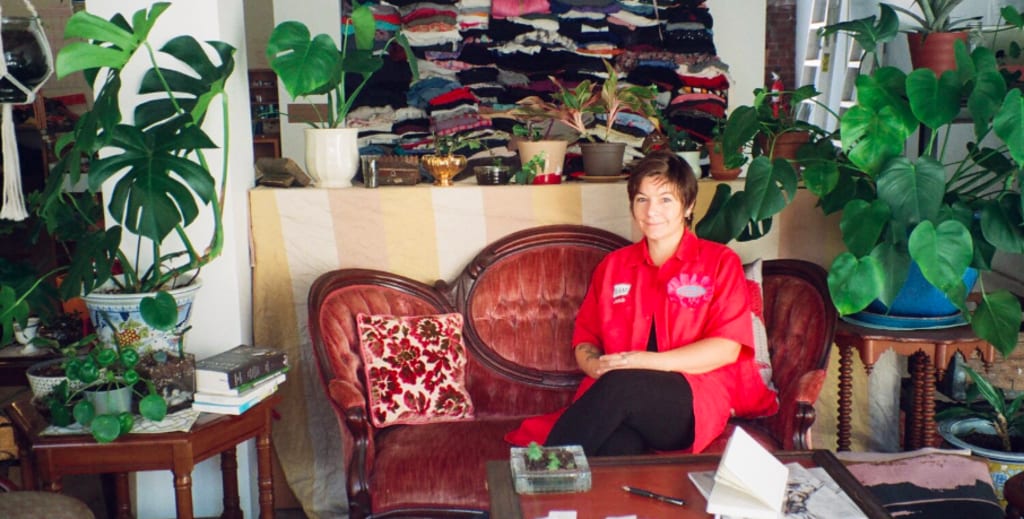
Fashionability: Tell me a bit about how you got into art; I know you got your Masters at the School of the Museum of Fine Arts.
Samantha Fields: I could go a bit further back [to undergrad]. The piece I'm using fashion and clothing and hoping it will reach a broader understanding of overconsumption. I have a relationship with textiles through my work and making clothes throughout high school and going to MassArt as an undergraduate to study fashion design and ended up making textile sculptures instead.
While the piece deals with fast fashion and production of textiles and overconsumption of textiles, I'm hoping to reach out to other aspects of our life where we are consuming things that are made to use once.
F: Yeah, and you comment on marketing and psyche in your work, how does that play a role in inspiring the piece?
SF: Well that came first actually, it's twofold, but the catalyst for the feature came from looking at how over pervasive marketing is in every part of our life, and the kind of research marketers do to sell products, and how our sense of need is elevated far beyond what we need and what we need even to be comfortable and happy and how this constant goal can never reach because there will always be more to have so it's not going to take care of the thing we're trying to do. Just thinking about reflecting when I was in elementary the cool kids had the brand names and I didn't and being picked on and then in junior high when we could afford a little bit more I would be willing to buy a shirt with the right name on it that I didn't like, just that thing we think we're going to get when we purchase that thing and that it never pays off.
F: And you talk about this disconnection with ourselves and then others around us and our environment, can you tell me more about how that comes into play here?
SF: I think we often walk around with a disconnect from ourselves because it's hard, to be honest, and we live in a time where there's no space for contemplation or self-reflection and self-reflection is somewhat fearful if you have to confront what you're dealing with.
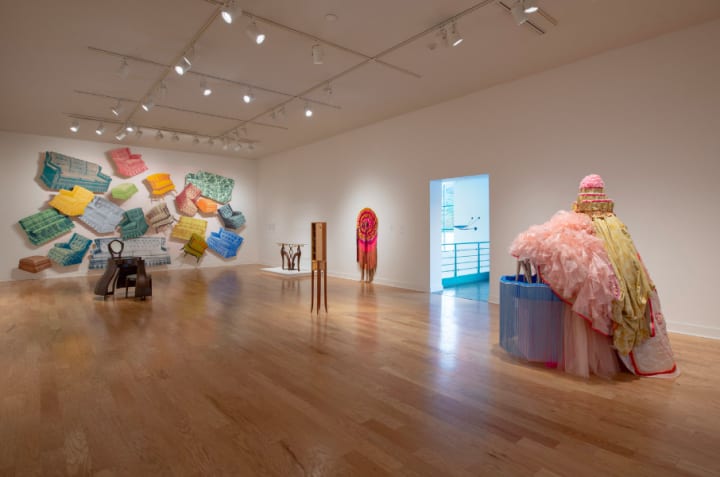
F: And especially now with social media
F: Back to your sculpture works, you typically use textiles in those works, how does this project differ from what you usually make or is similar to it?
SF: I feel like this project came together in my head, is not my project, it's not just mine, and everything that's happening here is happening in other places and other people, and other artists are making the same kind of opportunity for people to question consumption so if somebody else did this piece it wouldn't bother me it has to happen multiple times whereas the sculpture in my studio, I’d be pretty pissed off if somebody else made it.
F: It's more of a social catalyst to create a movement, and the space is very interactive, and this is your home, here are the resources, books, immersive experience for growing and learning.
SF: So how it's similar to what I typically make I've done interactive performative pieces where I invite people who sign up to work on a section while they're getting ready to by another person and there are other performative pieces I've done and also the installation aspect that comes up in my work and the idea of taking things apart, so much of my work is taking apart other women's labor that I find at thrift shops, so afghans, crocheted bedspreads of all those pieces in my work and typically start from somebody else's labor. So those might exist separately in my work and come together here.
F: How does that interact because you use textiles in your piece, because I know you like to do everything slowly?
SF: (Laughs) I question myself all the time.
F: Because you're using those textiles for the art and then there's this overconsumption of textiles so what's that play here. In your sculptural works you use textiles, and then here you're commenting on the overconsumption and problematic of this waste.
SF: So, the majority of my materials come from other people's leftovers.
F: Yeah, that sort of sustainable circular interaction with these textiles
SF: Yeah sometimes I end up buying pieces to finish the part, but the majority of when somebody passes away their children or whoever don't need these and they give them to me and I don't do that out of sustainability but out of money but also an interest in other people's history and you may not know that history when you see the piece. But there's a feeling that you get because it's a piece that is used and has a history in it which these clothes have an account of it.
The hands of those that made them and then the hands of those who wore them and not to be gross but there are peoples bodies in those clothes, and if it was a loved piece then it was a piece that only their body fit into it right, and there's a memory of somebody else in there, and then there's this not beautiful fact of how it is constructed and where a lot of it ends up.
F: Yeah and with this piece here on the wall where this dot is the 1 ton of clothing and it’s so small in the vast scheme of all the pieces that will find their way into the landfill so in some ways it's using it as an art form these textiles and giving it a new life.
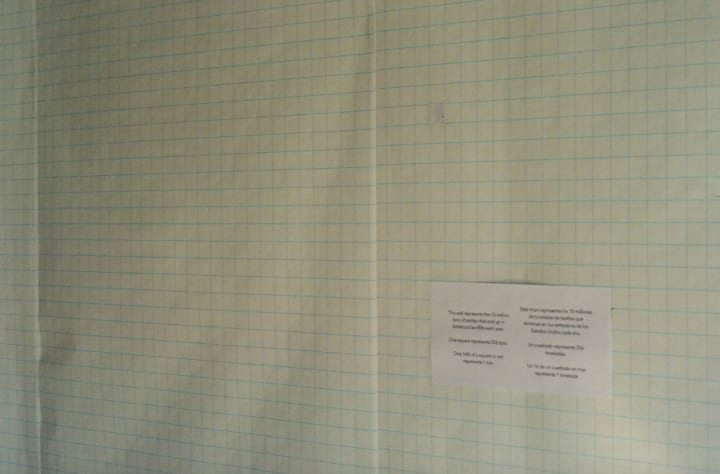
F: I know your work has a political pull in the sense that you engage in topics of gender class and power, how has this interest inspired this project?
SF: I think maybe this same sort of issue I mean that pile of clothes is filled with gender and class
F: And women being abused and, in the sweatshops, especially
SF: Yeah and power. It’s the majority of women making the garments and its often people in need of a job who will take a crappy job because they need it and then I mean the power structure that exists in the factory system and even in governments that continue to turn a blind eye to what happens in the factory
F: Because this project touches on sustainable and fast fashion, was that one of the goals? In the project, or is it more geared toward the sociopolitical aspect, the overconsumption, marketing, and the women labor this question of marketing and consumption and woman labor?
SF: It is all, yeah all of it all of them I look at the piece as having three points of a triangle and the first one where it came out of is examining ourselves, and I include myself in the our there because I have a very full closet. I have been trying to find manageable ways that I cannot participate as much so only buying thrift for a couple of years now, and this year I made a deal not to buy any clothes.
But, I bought two dresses at a thrift store and two pairs of shoes but it’s pretty dang good for an entire year and not being able to do that and the space to examine ourselves because everything is so fast and then allows us to make choices of purchasing things and again I know what my budget is like and there's a few who can afford sustainable handmade fashion like who can buy a 300 $ pair of jeans even though they'll wear them for the rest of their lives like that's a tiny portion of society, so I want to be careful like wagging my finger at people I still have to shop at Walmart sometimes
F: Yeah, of course, we're human, but the main thing is about asking ourselves these questions, examining ourselves, and thinking okay I do this, but If I reduce this then I'm doing something within the limitations that I can
SF: Yes, and so like even having some info given to you that's empathetic and having info available were you are not being criticized, and it's an offering because it's hard to receive something when someone judging you I don't think that's where we succeed.
There are two sides – there's what we can do as individuals and corporation need to change.
F: That comes from people changing because the market will respond to consumers
SF: Yeah, but also I've been challenged on that thought and held onto it in convos I've had lately and depending on where you can shop and what is offered to you, a corporation often controls your choices so if you need groceries and your options are the ones in Styrofoam and plastic bags you need to eat, and you need to eat at a specific price so at some point we need to say hey you need to stop using Styrofoam, so it has to go both ways it's dual, but I think the choices that you can make in your wardrobe like if you could fix a button or hem something, I believe that is some empowerment and might encourage you to speak out and do bigger things
F: And what this space does, like you have that book there to learn to sew, and there are resources about what you can do, and it's about being creative in your closets, what your friends have in their closets, like their preloved clothes, you know it's finding these alternatives like thrift shopping, and I understand there are limitations to sustainable shopping because the price point but there are also so many innovative ways you can go around this like secondhand markets and you can craft your style, and it makes you look a bit deeper.
SF: Or have less, I was reading an essay that I taught at tufts that is basically about consumerism and the history of it and created need where you could feel perfectly fine if the people around you are all about the same price point or you have a bit more than them, but your toilets outside and you're fine until you see someone else living in another way. And I feel like our understanding of our need isn't what we need.
F: Its constructed
SF: There's totally space for beauty and art, so I want to be careful with that because it's not just you need bread and water.
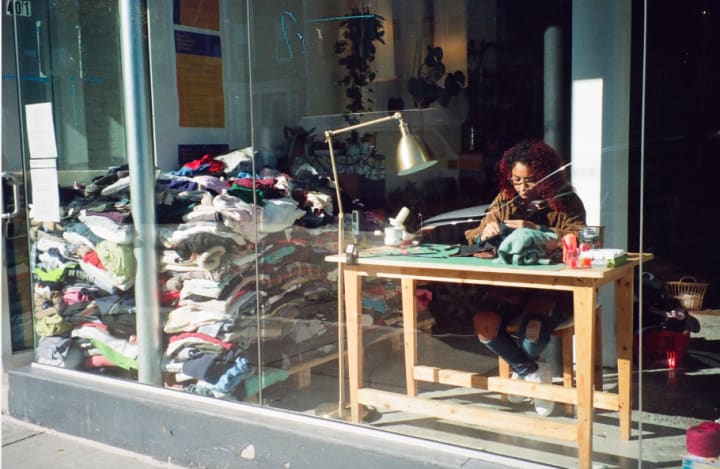
F: Just more conscious type of lifestyle
SF: My friend from Canada, talking about kids lunches, everything is individually wrapped, a juice box has so much packaging, and there was a time where I had a lunch box. There was a thermos, so you know you had a container for your sandwich that was reused, and now it's convenient, but it's also unnecessary. I guess it goes back I'm more interested in people connecting with themselves and finding things that are going to be fulfilling, and maybe this is too wishful.
But I think when people live in that place other choices that benefit other people come more naturally and perhaps that's too romantic.
I believe when we're in honest relationships with others, it feeds off. And the other thing is I don’t want to be manipulated by marketing and I am, I still am
We are hungry, we're hungry to be known, for security and those are all good things and were hungry to feel accepted those are natural and healthy human traits.
F: But we've made it into this materialistic consumerism for validation
SF: And it’s how we read others which is like come against that try not to make and I don’t always succeed. I know when I'm reading someone by their clothes, and I'm trying to go against that and give that person space to understand them when I interact with them and not make first judgments based on appearances
F: Yeah, there's something deeper there. So, the way I see your work is it's more about the human condition and expressing those means through topics that are socially kind of controlling us. Would you agree?
SF: Yeah exactly
About the Creator
Enjoyed the story? Support the Creator.
Subscribe for free to receive all their stories in your feed. You could also pledge your support or give them a one-off tip, letting them know you appreciate their work.

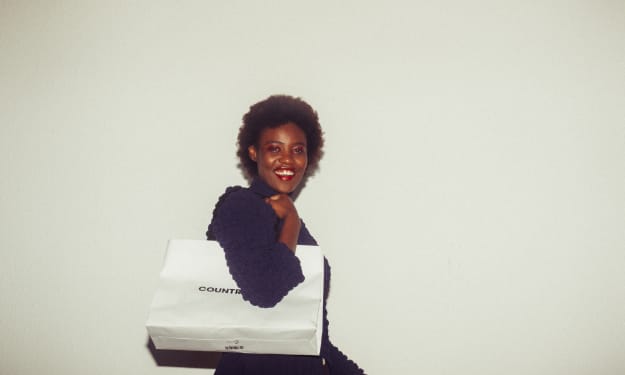



Comments
There are no comments for this story
Be the first to respond and start the conversation.